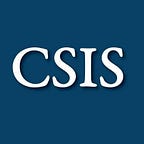The Guiana Shield: A Zone of Southern Caribbean Integration and Sustainable Development
By: David E. Lewis, Ambassador Henry Mac Donald, and Jean Yves Lacascade
November 28, 2017
The term “Guiana” or the “Guianas” is often used as a generic term for the three states on the northern coast of South America: Suriname, independent from the Netherlands since 1975; Guyana, independent from Great Britain since 1966; and French Guyane, an overseas department of France since 1946 and an “outermost region” of the European Union. This Southern Caribbean subregion in South America has significant potential to become a zone of cooperation and sustainable development. The area covered by these three territories is roughly 462,314 square kilometers (178,500.4 square miles). It also contains one of the largest rain forests in the world and a wealth of natural resources, including oil, natural gas, diamonds, bauxite, and gold, among others.
With a rising focus globally on regionalism and the benefits of integration, there is a growing recognition that these three territories can strengthen their economic and social development by exploring greater regional and functional cooperation. This subregion of South America has not been studied sufficiently in contemporary international relations literature on regional integration in Latin America and the Caribbean. Moreover, in the future it can become a distinctive subregion of cooperation in the work of intergovernmental regional organizations like the Caribbean Community (CARICOM), the Association of Caribbean States (ACS), or the Union of South American Nations (UNASUR).
In recent years, the concept of Guiana Shield has emerged in regional cooperation programs in the area of the environment. The full Guiana Shield region includes one of the world’s last remaining blocks of pristine rain forest, which boasts a rich biodiversity and contributes significantly to climate change mitigation. In a recent speech at the United Nations, President David Granger of Guyana called on that body to help protect and preserve the Guiana Shield as a global resource for the survival and sustainability of the planet. The REDD+ for the Guiana Shield Project is a part of the UN REDD+ Program (Reducing Emissions from Deforestation and Forest Degradation, plus Conservation and Sustainable Development), funded by the European Union, the French Guyane Regional Authority, and the French Global Environmental Facility. In these development cooperation initiatives, the multilateral donor agencies include Suriname, Guyana and French Guyane with Northern Brazil states like Amapa.
Over the past 18 months, significant discoveries of oil and gas reserves in the offshore waters of Guyana, with extensive exploration beginning to take place as well in tracts offshore of Suriname, have helped to highlight the potential importance of this area and of possible regional cooperation among the three Shield states. The late October 2017 visit of President Emmanuel Macron of France to French Guyane for a conference of the presidents of the EU “outermost regions” also highlighted the increased attention to the prospects of functional regional cooperation in the subregion. In his speech to the conference, President Macron underlined the advantages of regional collaboration in the structuring of common economic sectors, an implicit recognition that French Guyane can benefit from strengthening cooperation with its immediate neighbors.
Beyond the new promising focus on oil and gas exploration, this future zone of cooperation has also been recognized for its potential for expanded hydro-energy production, agricultural development, mainly in the coastal area near the Atlantic Ocean, and the promotion of sustainable ecotourism.
Future energy interconnection of the Shield may improve the regional electricity system, allowing electricity trading in the subregion. Attention has already been paid to putting together an optimized power generation expansion plan, by which the region could use the cheapest and most sustainable sources of energy, minimizing costs, as well as environmental and social impacts. The Inter-American Development Bank’s Arco Norte Study of the energy matrix of the Guiana Shield is an important attempt to analyze the potential for cooperation through energy interconnection.
This Southern Caribbean subregion offers significant expanses of arable land for agriculture production, with historic production of commodities such as sugar cane and rice. However risk models predict increased flooding, erosion, and salt water intrusion in the coastal areas where 90 percent of the three countries’ population resides. This area has one of the lowest lying shorelines in the world. With the real threat of sea-level rise, there is the possibility that the Guiana Shield states will face major related infrastructure and development challenges in the coming years.
Sustainable tourism is another promising sector for expanded development within the subregion. Sustainable tourism is currently one of the leading income earners in the global tourism sector, which alone is the world’s number one employer, accounting for 10 percent of jobs globally. This subregion is among the greenest and most unspoiled spots on the globe. With “green travel” presently the latest trend in the travel and tourism industry, this sector offers significant potential for development. Suriname, Guyana, and French Guyane can cooperate in the promotion of new and unexploited ecotourism destinations.
David E. Lewis is a senior associate with the Americas Program at the Center for Strategic and International Studies in Washington, D.C. Ambassador Henry Mac Donald is president of the World Development Foundation. Jean-Yves Lacascade is a research associate with the Center of Geopolitical and International Analysis at the University of the French Antilles in Guadeloupe.
Commentary is produced by the Center for Strategic and International Studies (CSIS), a private, tax-exempt institution focusing on international public policy issues. Its research is nonpartisan and nonproprietary. CSIS does not take specific policy positions. Accordingly, all views, positions, and conclusions expressed in this publication should be understood to be solely those of the author(s).
© 2017 by the Center for Strategic and International Studies. All rights reserved.
Originally published at www.csis.org.
